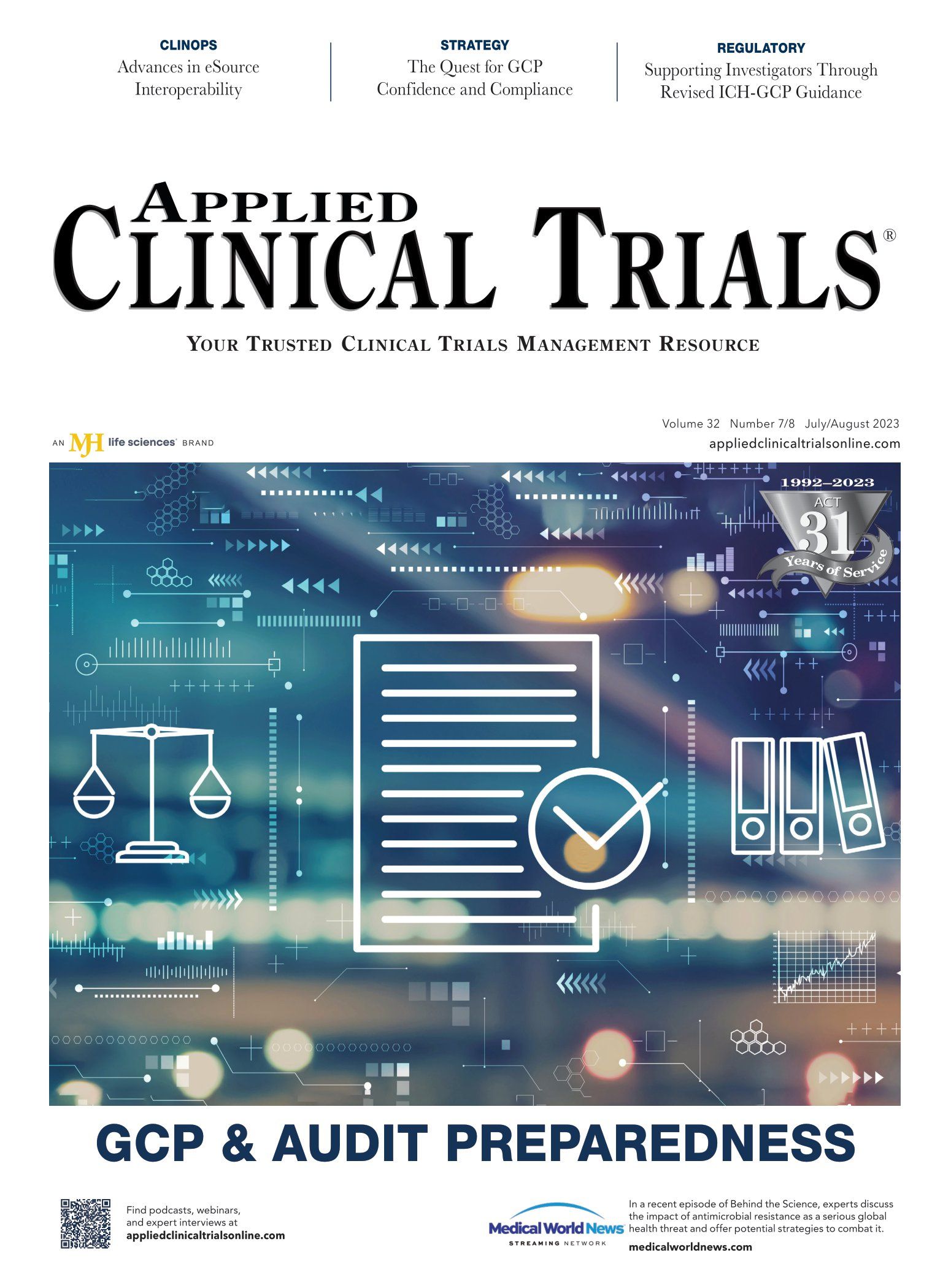FDA Inspections Face Overhaul
The agency proposes significant revisions to oversight programs for drugs and medical products.

As part of agency initiatives to strengthen its oversight of human food and food products, FDA is revising inspection and compliance programs for drugs and medical products, at home and abroad. While the current goal is to improve FDA’s capability for monitoring and curbing contamination issues involving foods, the agency also proposes significant changes in oversight and inspection programs for medicines and other regulated products. Some of the changes arise from FDA’s greater reliance on remote oversight activities during the global COVID-19 pandemic, which encouraged more cooperation with foreign inspection programs, and these are likely to continue as FDA seeks to better monitor overseas facilities in more timely and less costly ways.
A recent sign of these developments is a slight change in how the Center for Drug Evaluation and Research (CDER) selects drug manufacturing sites for inspections to ensure compliance with standards. CDER’s Office of Pharmaceutical Quality (OPQ) recently updated procedures for its risk-based site selection model to additionally include the compliance history of an establishment in the country or region where it is located. This information will be added to FDA’s existing list of risk factors for setting inspection priorities, which includes site operations, product characteristics, compliance history, past field alert reports, recalls, and other compliance issues.1
The aim of the update, FDA explains, is to provide more clarity on risk factors associated with patient exposure and inherent product risk, as specified in legislation enacted by Congress in late 2022. The Food and Drug Omnibus Reform Act (FDORA) encourages continued agency focus on inspections for the most critical production sites overseas and at home. However, one outcome of this change could be additional oversight of facilities that have good compliance histories but are located in regions or countries that warrant more frequent inspections.
Broader agency reorganization
This relatively targeted change in criteria for FDA selection of drug manufacturing inspection sites is part of an ongoing restructuring of the agency’s Office of Regulatory Affairs (ORA) to better monitor food safety issues and to schedule field inspections more efficiently. The aim is to prevent delayed responses to serious food contamination issues, as occurred with the baby-formula plant contamination and recall occurrence in 2022, which created a national crisis in formula shortages. FDA Commissioner Robert Califf announced on June 28 a revised model for ORA to better align with a new unified Human Food Program and to coordinate and respond expeditiously to public health issues.2
These changes have been in the works since January of this year, as part of a broader initiative to better monitor food safety issues and to reorganize FDA’s field work to reflect the priorities of program offices and Centers.3 The reorganization will shift certain compliance functions currently managed within ORA to compliance offices in FDA centers, a shift that aims to “streamline operations and expedite decision-making” so that the agency can determine more quickly what sites to inspect and what compliance actions to take. ORA will focus more on conducting investigations, inspections, and oversight of imports, still operating through offices for medical devices, human and animal drugs, biologics, and bioresearch monitoring inspections (BIMO)—all reporting to an associate commissioner for regulatory affairs. More details on the plan are expected this fall and ultimately will involve Congressional review and more formal rulemaking, as well as agreement from FDA unions and staff. It remains to be seen whether these changes lead to more aligned and efficient oversight activities or uncertainty and duplication of effort.
Risk-based approach for clinical research monitoring
FDA’s emphasis on considering risk factors in planning for medical product oversight also applies to BIMO investigations. The agency issued a guidance in April that makes recommendations to industry on implementing a risk-based approach to monitor investigational studies on human drugs, biologics, medical devices, and combination products.4 This expands on a 2013 guidance on this subject, here providing additional recommendations for sponsors in planning and developing research monitoring plans and assessing results from such activities.
The guidance responds to a provision in FDORA that clarifies FDA’s authority to conduct BIMO inspections and which sites and facilities are subject to this oversight and required to provide records and other information. The guidance emphasizes the importance of data integrity in clinical trial monitoring and the need to design research protocols that identify potential risks for data collections. Centralized monitoring, moreover, should be applied across multiple clinical sites so that sponsors may detect inconsistencies or omissions in data and determine which clinical sites need further review.
More foreign inspections?
Meanwhile, members of Congressional continue to complain that FDA is moving too slowly to revitalize foreign plant inspections, particularly for manufacturers of active ingredients and generic drugs in China and India found to violate FDA safety and quality regulations. A recent letter to FDA from leaders of the House Energy and Commerce Committee criticizes the agency’s decision to allow the temporary import of unapproved drugs from China, even though the purpose is to address a serious drug shortage. The legislators urge the agency to ramp up on-site inspections in those regions, instead of utilizing alternative oversight methods such as record reviews and remote site visits.5
The broader aim of the July 18 letter is to urge more FDA action to reduce ongoing shortages of critical drugs, many with ingredients or generic products made abroad.6 FDA halted almost all foreign inspections during the pandemic, and only restarted those efforts earlier this year. Lawmakers have pressured FDA to end preannounced foreign site visits, a change that is difficult when resources and schedules are limited and offer little flexibility.
FDORA addresses this and a number of issues related to FDA foreign inspections. The legislation encourages more unannounced FDA inspections of foreign drug establishments, shifting away from FDA’s usual practice of scheduling foreign site visits in advance to ensure access to the facility. At the same time, FDORA aims to reduce unneeded foreign site visits by supporting expanded FDA use of mutual recognition agreements (MRAs) with trusted foreign regulatory counterparts to obtain reports and information related to pre-approval inspections, as well as more routine manufacturing site visits. The legislation supports FDA recognition of inspections by foreign regulatory counterparts, such as the European Union, the UK, Switzerland, and other established agencies, in an ongoing effort to minimize duplicative site visits by all parties.
References
1. https://www.fda.gov/media/116004/download?utm_medium=email&utm_source=govdelivery
5. https://d1dth6e84htgma.cloudfront.net/Letter_to_FDA_on_Foriegn_Drug_Inspections_dc7bf60a6d.pdf

Improving Relationships and Diversifying the Site Selection Process
April 17th 2025In this episode of the Applied Clinical Trials Podcast, Liz Beatty, co-founder and chief strategy officer, Inato, discusses a number of topics around site engagement including community-based sites, the role of technology in improving site/sponsor relationships, how increased operational costs are impacting the industry, and more.
Behind the Buzz: Why Clinical Research Leaders Flock to SCOPE Summit
February 7th 2025In this episode, we meet with Micah Lieberman, Executive Conference Director for SCOPE Summit (Summit for Clinical Ops Executives) at Cambridge Innovation Institute. We will dive deep into the critical role of collaboration within the clinical research ecosystem. How do we bring together diverse stakeholders—sponsors, CROs, clinical trial tech innovators, suppliers, patients, sites, advocacy organizations, investors, and non-profits—to share best practices in trial design, program planning, innovation, and clinical operations? We’ll explore why it’s vital for thought leaders to step beyond their own organizations and learn from others, exchanging ideas that drive advancements in clinical research. Additionally, we’ll discuss the pivotal role of scientific conferences like SCOPE Summit in fostering these essential connections and collaborations, helping shape the future of clinical trials. Join us as we uncover how collective wisdom and cross-industry partnerships are transforming the landscape of clinical research.
FDA-Approved Gene Therapy Beqvez Shows Sustained Efficacy, Safety in Long-Term Hemophilia B Trial
April 17th 2025Beqvez (fidanacogene elaparvovec), an FDA-approved one-time gene therapy for hemophilia B, demonstrated sustained factor IX expression, low bleeding rates, and a favorable safety profile over long-term follow-up.